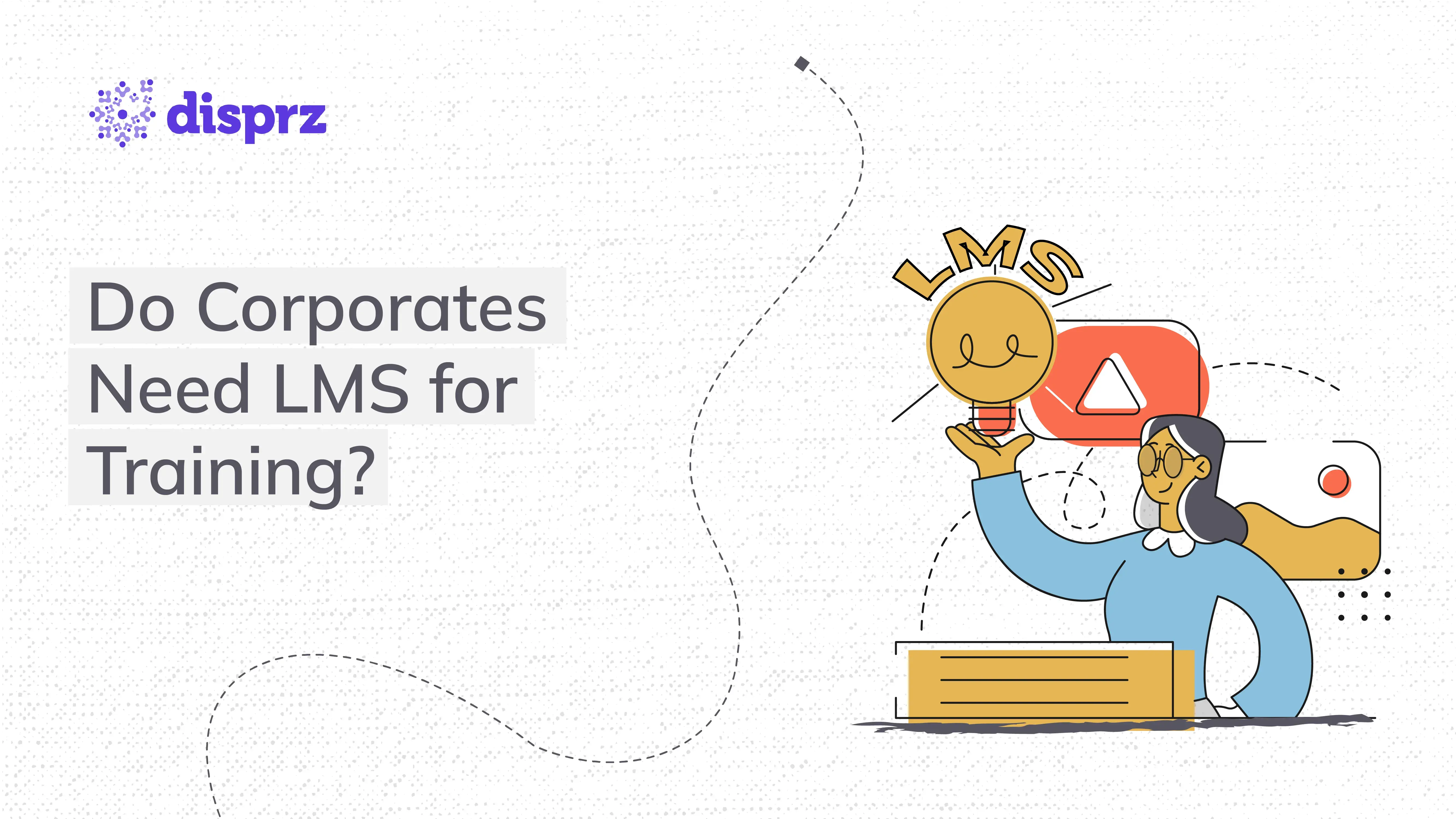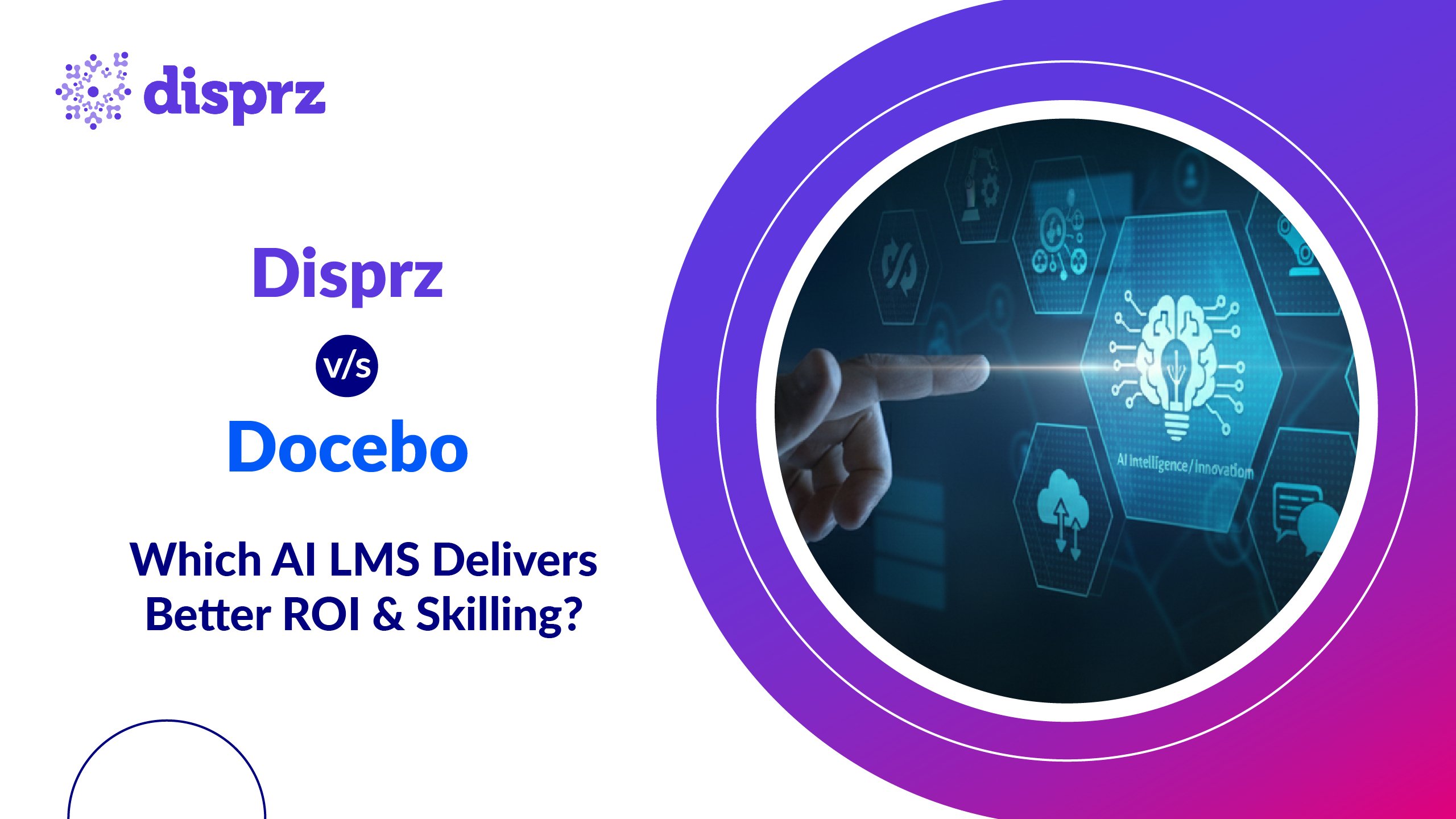Introduction to LMS in corporate training
A learning management system (LMS) is a digital platform designed to host curated employee training materials, track learner progress, and provide valuable feedback. A modern corporate LMS facilitates efficient employee training across your organization, regardless of their location.
Why corporates need an LMS
Here are the 5 reasons why corporates need an LMS solution
1) Training cost reduction
Switching to an LMS reduces travel, printing, and instructor costs by up to eighty percent, streamlining investments. Opting for the right platform with efficient tools, enhanced training methods, and improved accessibility is crucial for business success.
2) Easy tracking of learner progress
An LMS allows you to monitor the progress of your learners and assess whether they achieve their learning objectives. It provides insights into individual and group performance, facilitating informed decisions to optimize learning outcomes.
3) HR processes automation
Human Resource Management Systems (HRMS) digitalize databases, develop personnel programs, and automate routine tasks, freeing HR managers to focus on strategic initiatives over automatable processes.
4) Increased performance management
Investing in staff training boosts productivity by optimizing human resource efficiency. Empowered employees contribute effectively to organizational goals, adapt to challenges, and drive sustained growth.
5) Reduced employee turnover
Maintaining compliance with training requirements enhances your employer ratings and brand reputation. Additionally, you can measure the Return on Investment of implementing an LMS by dividing the sum of gains and savings by the
LMS cost: [Gains + Savings] / Cost of LMS = ROI
This allows you to track and analyze your investment effectiveness.
Benefits of implementing an LMS
An LMS aims to optimize employee learning experiences. User-friendly LMS solutions that enhance the accessibility of training materials benefit the entire organization.
Reduced employee training costs
Traditional classroom learning incurs significant expenses, including travel and accommodation. In contrast, an LMS offers a cost-effective, cloud-based platform accessible anytime for a fixed monthly or yearly fee.
Access to centralized learning content
Digital eLearning content scattered across shared drives and platforms isn't as effective as centralizing it in an LMS. This creates a unified knowledge base that enhances accessibility and preserves organizational know-how.
Access to insights
Corporate LMSs offer robust tracking and reporting tools to assess training effectiveness and pinpoint areas for improvement. They also track learner progress and identify skill gaps, facilitating targeted upskilling and reskilling programs.
Improve employee retention
Effective onboarding and learning programs in a company are associated with increased employee engagement and retention rates. An LMS simplifies the delivery of these opportunities in a cost-effective manner.
Real-world use cases of LMS in corporates
A couple of use cases are
-
Johnson & Johnson boasts a portfolio of over 350 products. Utilizing a robust corporate LMS, the company effectively tests and trains its managers to comprehensively understand the entire product range, from A to Z.
-
Oticon Inc uses an LMS system to efficiently transfer knowledge and information to new managers globally, regardless of their current location.
Key features of an effective corporate LMS
Most LMS platforms offer comprehensive features, but specific ones are more critical for corporate users.
E-commerce
Generate revenue from your company's expertise by creating online courses using an LMS equipped with integrated e-commerce features for seamless payment processing and subscriptions. Alternatively, if you prefer buying content, consider an LMS with access to a training content marketplace.
Personalization
Personalization plays a pivotal role across social media, entertainment, and training. Younger employees anticipate tailored learning experiences that significantly enhance the effectiveness of their professional development efforts.
Mobile learning
It's essential for all worthwhile content to be accessible on mobile devices. This isn't just a trend; it offers significant advantages. Mobile learning enables learners to access online courses anywhere, promoting self-paced learning.
Social learning
Effective training involves collaborative learning where individuals share ideas to expand knowledge. LMS platforms support this with social features like chat and forums, fostering learner connections and knowledge sharing.
Artificial intelligence (AI)
The AI revolution is revolutionizing training through automated recommendations, virtual tutoring, and AI-powered content creation within LMS platforms, ensuring learning efforts are future-proofed.
Common challenges and solutions in LMS implementation
The challenges are
1) Lack of team focus
E-business learning involves stakeholders like managers, instructors, designers, and developers. Coordinating objectives, tasks, and alignment becomes challenging with many team members involved.
Solution
An implementation guide might seem like an extra task, but it saves time and prevents headaches.
Keep it brief and essential, including:
-
Goals, like cost-saving on training, training customers on new features, or providing compliance training
-
Team members and their roles
-
Links to resources and LMS provider contacts
-
Guidelines for course naming, content updates, and oversight
2) Lack of time management
Underestimating the time needed to develop and launch online training is a common barrier. Various factors can delay LMS implementation, despite corporate LMS systems being designed for quick setup. Many of Disprz LMS’s customers have successfully launched it within a few days.
Solution
Setting up an LMS requires a realistic schedule with clear goals and deadlines, including:
-
Live date
-
Content delivery date
-
Test date
-
IT approval dates
Account for potential delays, such as late course materials, to stay on track.
3) Unable to decide on user roles
Carefully consider user roles like managers, instructors, and administrators to assign appropriate access rights and privileges within the LMS. Failing to define these roles can lead to confusion and disorganization in managing your training.
Solution
Clearly assign roles and responsibilities before launch to prevent confusion and save time. Define team members' tasks outside the LMS to improve implementation efficiency. Once decided, you can start assigning roles within the LMS.
4) Unable to add users to your LMS
User onboarding is crucial for LMS implementation and often sparks internal debate. Decide early on the best method to ensure a smooth transition for everyone involved.
Solution
Choose the most practical method for adding users to your LMS and assign roles based on their responsibilities. Typically, roles like learner, instructor, admin, and manager can be assigned during or after user creation.
Types of training supported by LMS
The different types of training supported by LMS are:
-
On The Job Training (OJT)
On the job training helps employees learn new skills through real-life practice under experienced guidance, despite potential schedule disruptions, yielding quicker results.
-
Role-Playing
Role-playing simulates workplace scenarios to practice skills under guidance, enhancing preparation and confidence but may not suit all due to time constraints.
-
Cross-training
Cross-training enhances employee versatility and internal support, promoting promotions and reducing recruitment costs, despite potential strain on employees.
How to choose the right LMS for your corporate
Here are the essential features to consider when choosing the best LMS for companies:
Customize content and learning paths
To ensure employees receive relevant materials suitable for their role and level in the company.
Support remote and hybrid work
These environments with accessibility across devices and locations.
Real-time coaching
This allows you to give immediate feedback to your team.
Analytics for learners
To monitor employee’s progress and base training program decisions on data insights.
Various learning options
Options such as microlearning, videos, and gamification to maintain engaging learning experiences.
Strong security
This is to safeguard your team’s data and information.
Latest trends in corporate LMS
The latest corporate LMS trends are as follows:
Multimedia-based learning
It integrates various forms of media, such as videos, images, and interactive elements, to enhance engagement and learning effectiveness.
Experiential learning
This involves hands-on activities and reflection to deepen understanding and apply practical knowledge, emphasizing learning through action and reflection.
Immersive learning
Immersive learning uses simulated environments for realistic, engaging experiences that enhance retention and engagement.
Enterprise training solution
It efficiently manages and delivers comprehensive training across large organizations, integrating content management and performance analytics for effective development.
Conclusion
Corporate training LMS systems streamline training processes, reduce costs, track learner progress, automate HR tasks, enhance performance management, and improve employee retention. Disprz learning platform offers comprehensive solutions for effective corporate training book a demo today!








